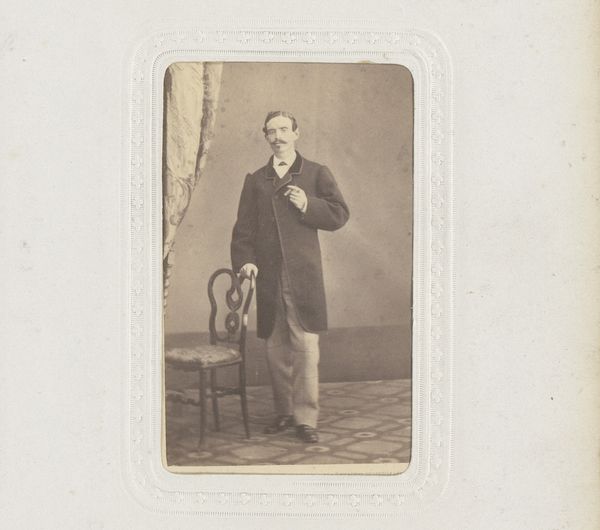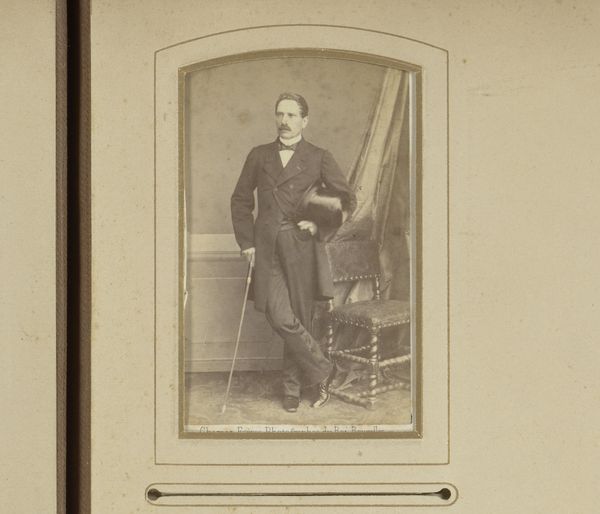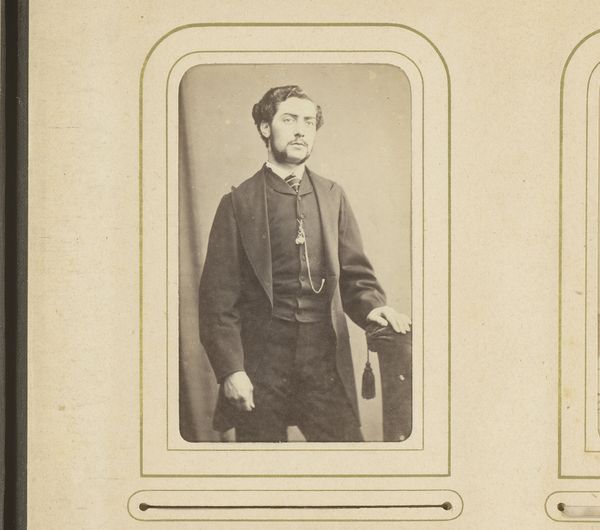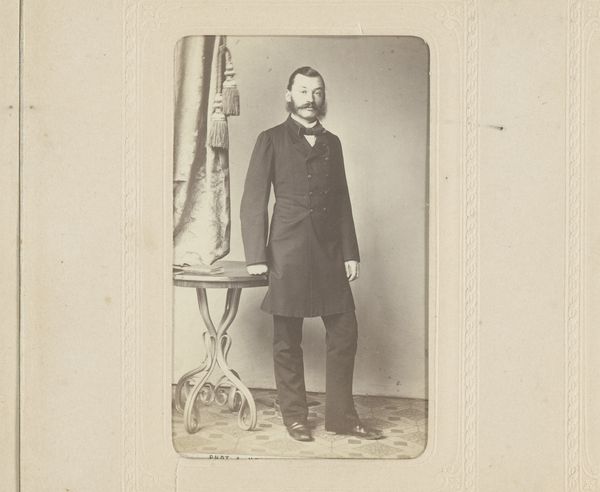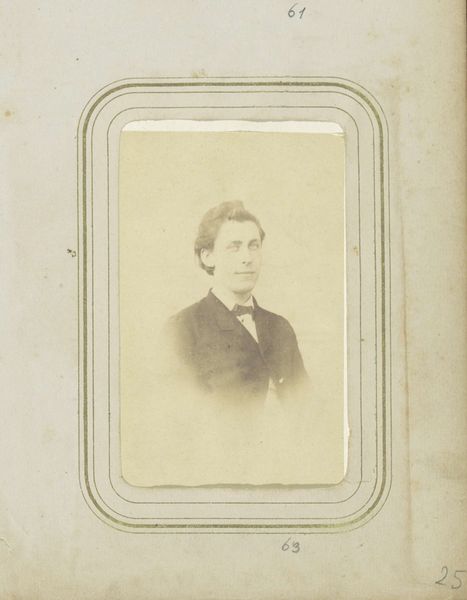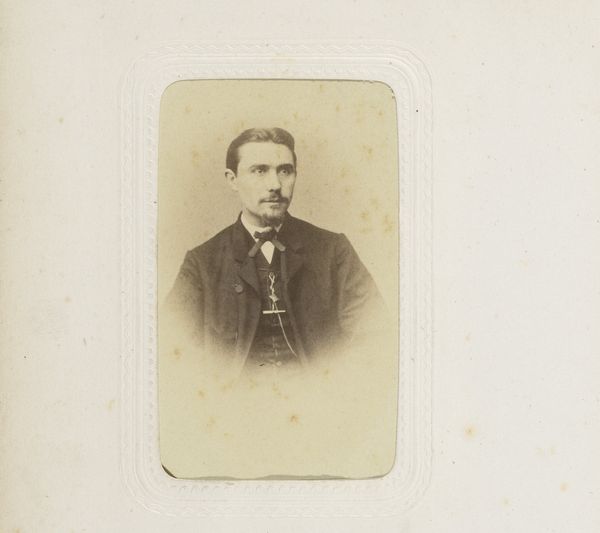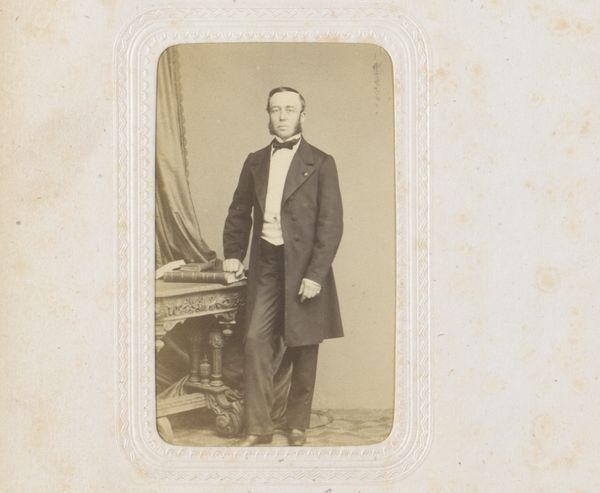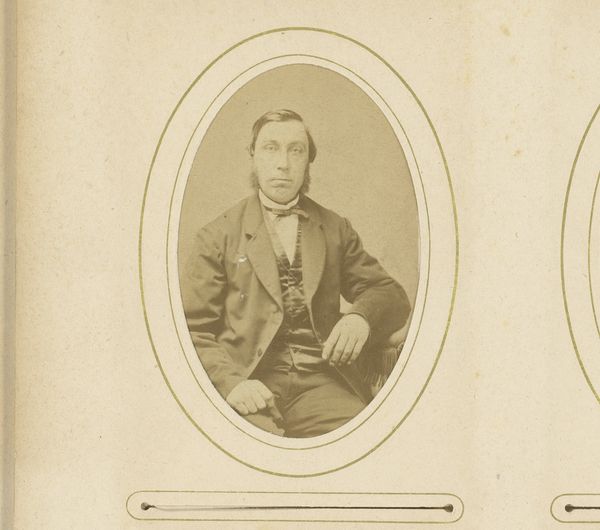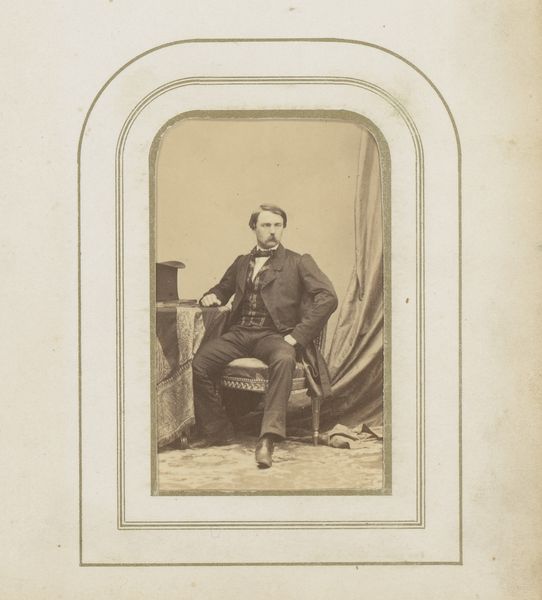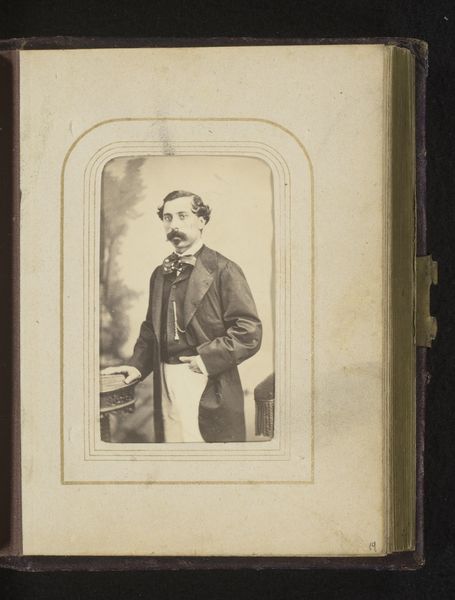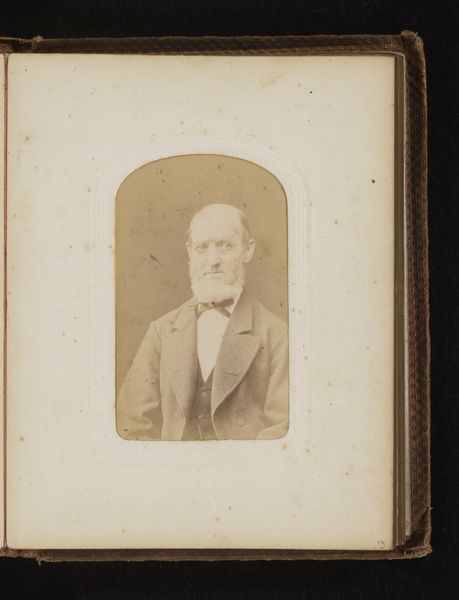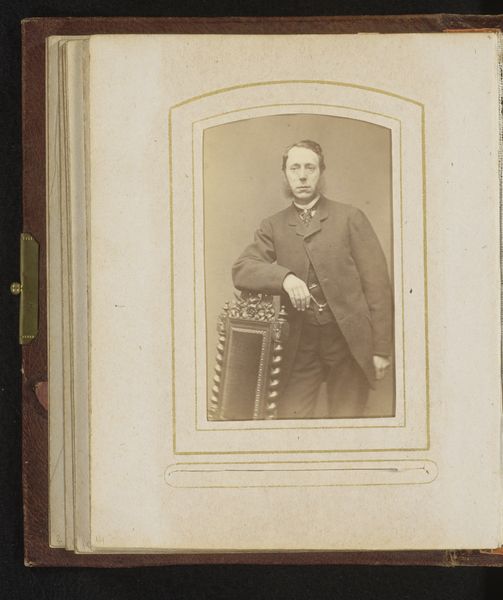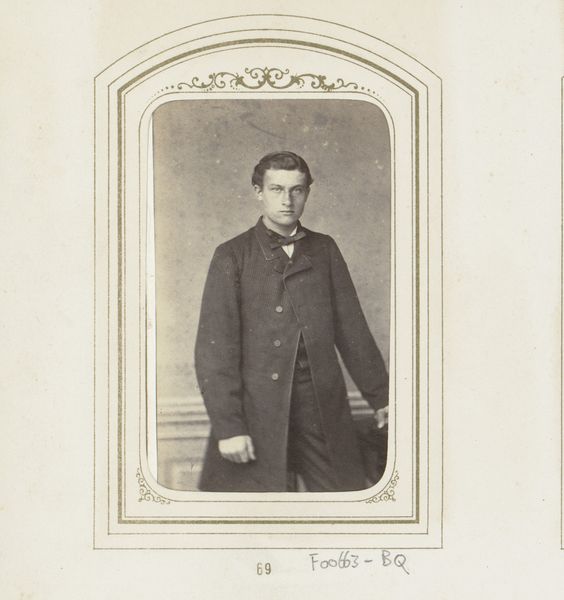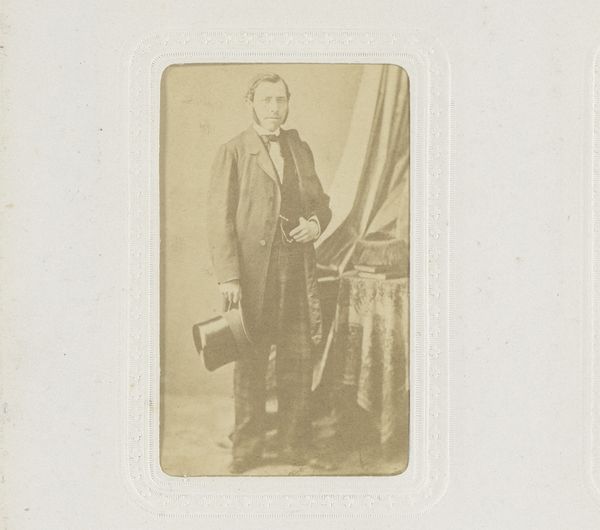
photography, gelatin-silver-print
#
portrait
#
photography
#
gelatin-silver-print
#
19th century
Dimensions: height 85 mm, width 52 mm
Copyright: Rijks Museum: Open Domain
Curator: Here we see "Portret van een staande man met een snor," a gelatin silver print dating from somewhere between 1855 and 1865, attributed to Louis Olmes. Editor: There's a stillness about him, a quietude, almost melancholy, despite the somewhat ornate chair he leans upon. The photograph itself has faded to a near monochrome sepia, heightening that sense of looking back through time. Curator: Gelatin silver prints, popular then, were key to mass production of photographs. They offered a sharper image compared to earlier methods, becoming a cornerstone of visual representation and dissemination. Looking at him, notice the meticulous detailing of his jacket, almost hinting at a tailored quality representing a certain social position during that era. Editor: Indeed. Beyond just social class, the mustache itself stands as a powerful marker of identity. Think of its association with artists, bohemians, even revolutionaries. Could it be argued that such portraiture became an exercise in creating and projecting identities through chosen aesthetics? Curator: Absolutely. Throughout art history, facial hair serves almost like visual language indicating philosophical leanings, military affiliation, or cultural rebellion. Men used to communicate social and political self-definition using external elements to establish their identities. In the case of this "man with a moustache" as per the title of this photograph, it is tempting to wonder what the hidden symbolism behind it is. Editor: Photography shifted social narratives and power dynamics, too, providing wider segments of society access to visual self-representation—although definitely not *everyone*. Consider who was excluded, systemically: the working class, people of color, women lacking independent means...who rarely were given this option to participate in projecting a specific persona to future generations. Curator: Those considerations are crucial, grounding it within its socio-economic environment. His posture and coat do tell tales beyond merely sartorial choice. Now it is hard not to consider broader political narratives within European identity during that epoch, the rise of certain male figures shaping societies while so many remain unseen, untold. Editor: A fascinating testament to how photographs carry weighty legacies. It prompts many pertinent considerations, opening critical dialogues across epochs of gender, racial, social-historical contexts within artistic interpretation itself. Curator: Indeed, the image offers a small snapshot but is laden with much, which can be endlessly interpreted to inform ourselves today.
Comments
No comments
Be the first to comment and join the conversation on the ultimate creative platform.
